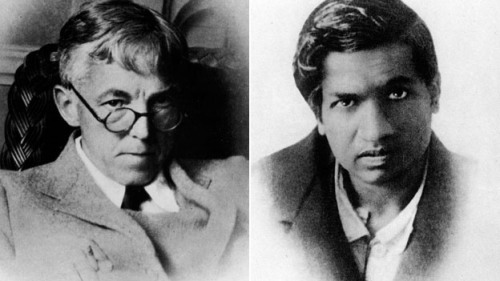
In lectures, his enthusiasm and delight in the subject fairly spilled over. “One felt,” wrote one of his later students, E. C. Titchmarsh, “that nothing else in the world but the proof of these theorems really mattered.” Norbert Wiener, the American mathematical prodigy who would later create the field known as “cybernetics,” attended Hardy’s lectures. “In all my years of listening to lectures in mathematics,” he would write, “I have never heard the equal of Hardy for clarity, for interest, or for intellectual power.” Around this time, a pupil of E. W. Barnes, director of mathematical studies at Trinity, sought Barnes’s advice about what lectures to attend. Go to Hardy’s, he recommended. The pupil hesitated. “Well,” replied Barnes, “you need not go to Hardy’s lectures if you don’t want, but you will regret it—as indeed,” recalled the pupil many years later, “I have.” Others who missed his lectures may not, in retrospect, have felt such regret: so great was Hardy’s personal magnetism and enthusiasm, it was said, that he sometimes diverted to mathematics those without the necessary ability and temperament.
But as lucid as were his lectures, it was his writing that probably had more impact. Later, speculating about what career he might have chosen other than mathematics, Hardy noted that “Journalism is the only profession, outside academic life, in which I should have felt really confident of my chances.” Indeed, no field demanding literary craftsmanship could fail to have profited from his attention. “He wrote, in his own clear and unadorned fashion, some of the most perfect English of his time,” C. P. Snow once said of him. That Hardy’s impressions of Ramanujan would be so relentlessly quoted, and would go so far toward fixing Ramanujan’s place in history, owes not alone to his close relationship with Ramanujan but to the sheer grace with which he wrote about him.
**
Thought, Hardy used to say, was for him impossible without words. The very act of writing out his lecture notes and mathematical papers gave him pleasure, merged his aesthetic and purely intellectual sides. Why, if you didn’t know math was supposed to be dry and cold, and had only a page from one of his manuscripts to go on, you might think you’d stumbled on a specimen of some new art form beholden to Chinese calligraphy. Here were inequality symbols that slashed across the page, sweeping integral signs an inch and a quarter high, sigmas that resonated like the key signatures on a musical staff. There was a spaciousness about how he wrote out mathematics, a lightness, as if rejecting the cramped, ungenerous formalities of the printed notation. He was like a French impressionist, intimating worlds with a few splashes of color, not a maker of austere English miniatures.